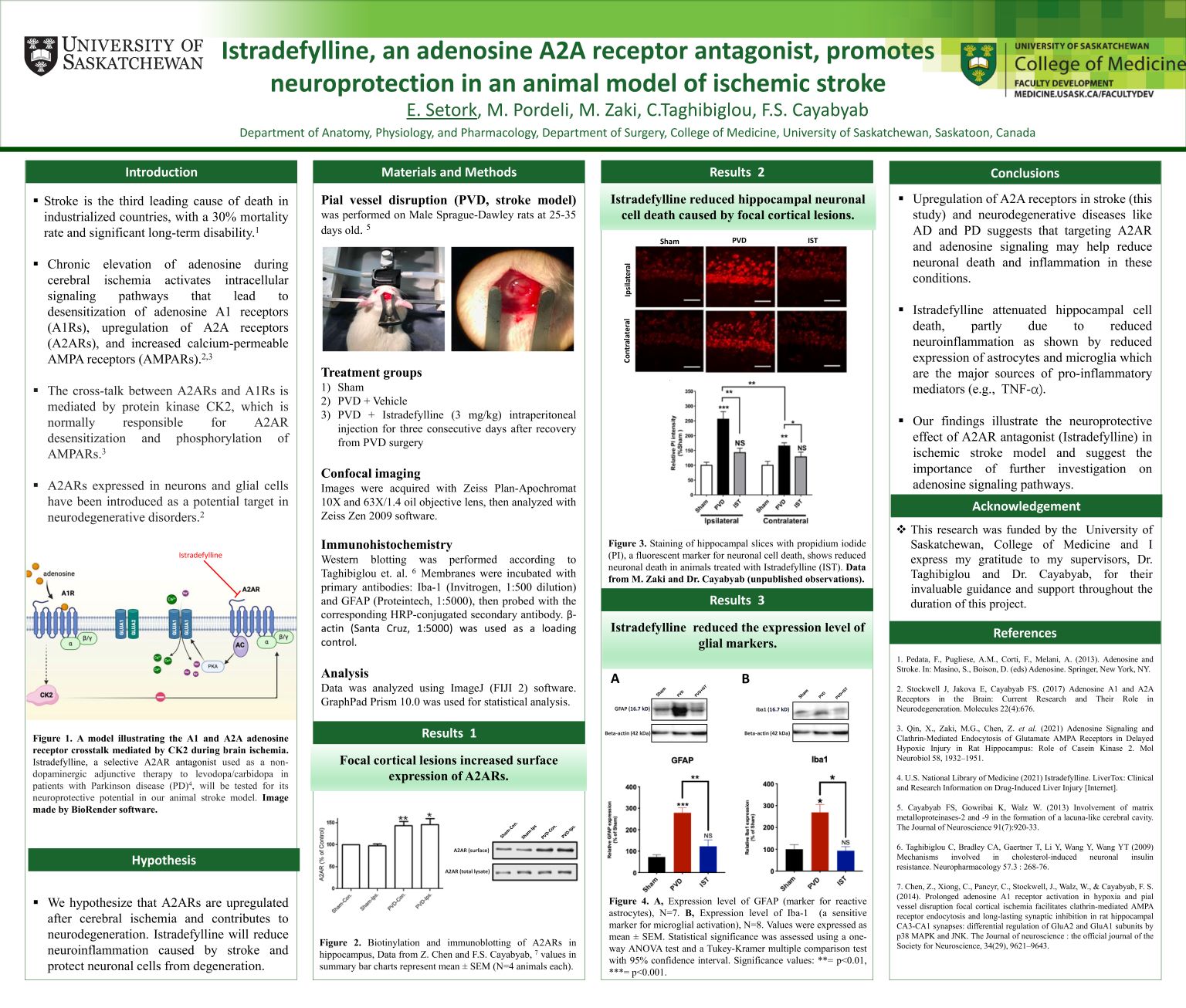
Istradefylline, an adenosine A2A receptor antagonist, promotes neuroprotection in an animal model of ischemic stroke
Elina Setork
Stroke is the second-leading cause of death globally, with 16 million cases in 2020 and with half of the stroke survivors having long-term disability. Current treatments focus on acute care, with limited attention to neuroprotection and prevention. After a stroke, extracellular adenosine levels rise rapidly, leading to desensitization of neuroprotective A1 receptors (A1Rs) and upregulation of A2A receptors (A2ARs). This elevation of A2ARs after ischemic insult is mediated by protein kinase CK2. A2AR hyperactivation is also linked to neurodegenerative diseases like Alzheimer’s and Parkinson’s disease, making it a target for reducing neuronal damage after adenosine elevation. Since A1R and A2AR are abundantly expressed in hippocampal neurons and glial cells, we investigated the neuroprotective potential of Istradefylline, a selective A2AR antagonist, in reducing hippocampal neuronal death and glial activation. Using a pial vessel disruption (PVD) stroke model, we analyzed hippocampal tissues from sham, PVD + vehicle, and PVD + Istradefylline groups. Using propidium iodide staining and confocal microscopy, the neuronal death observed after PVD was significantly reduced by Istradefylline. The PVD-induced enhancement of microglia and astrocyte markers was also attenuated by Istradefylline. These results suggest that blocking A2AR activity with Istradefylline promotes neuroprotection by reducing neuroinflammation from astrocytes and microglia.
